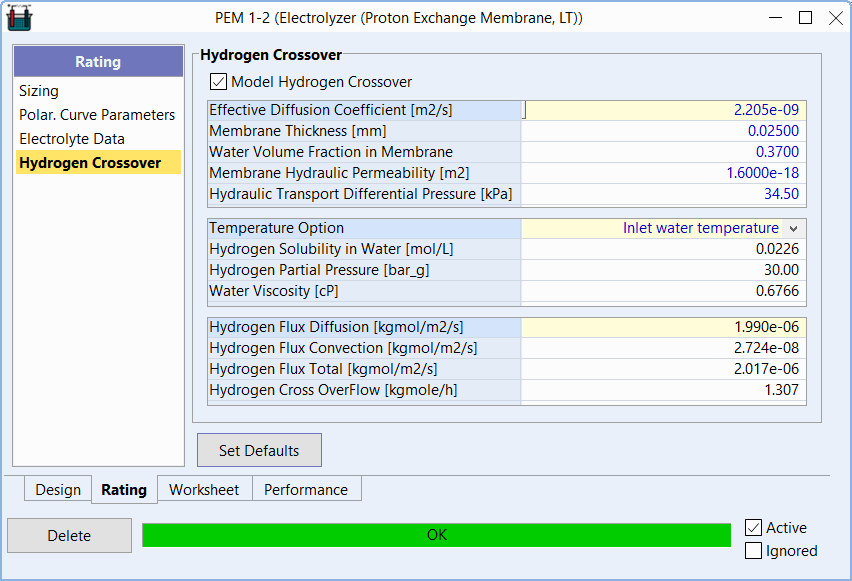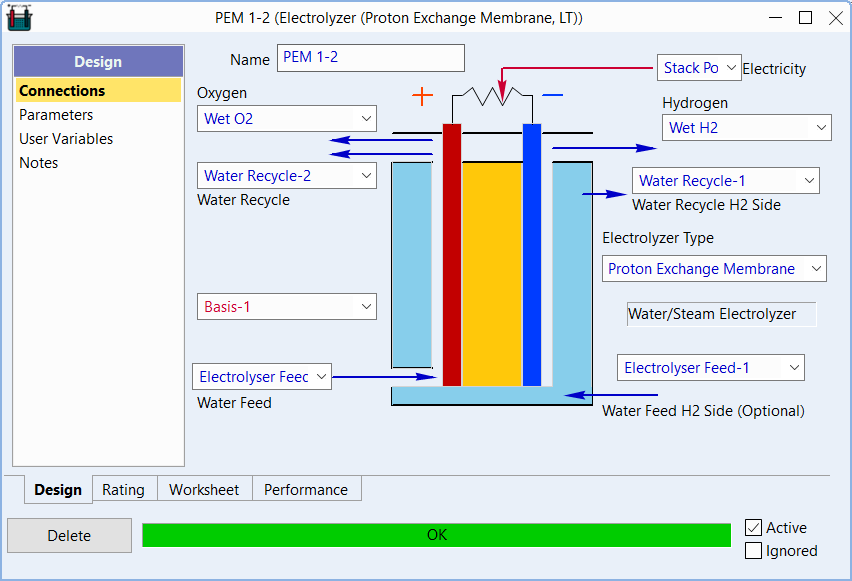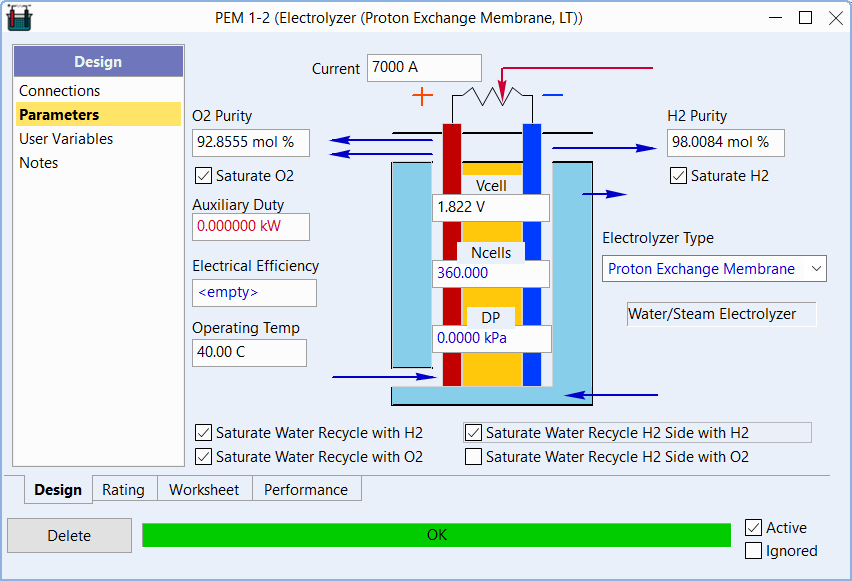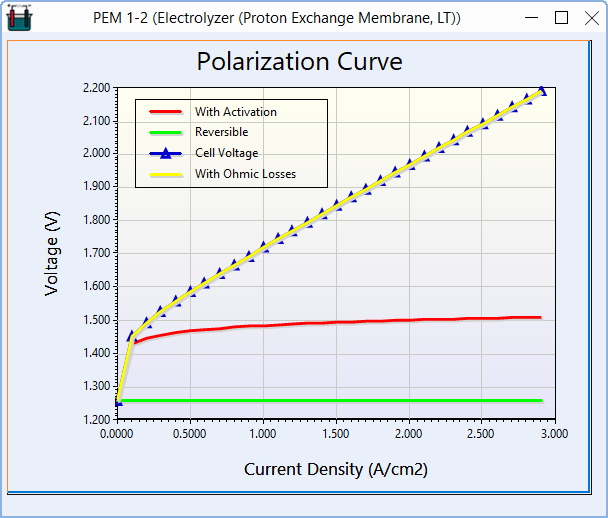Petro-SIM 7.5 improvements to Unit Operations
New Features in the Water Electrolyser unit operation
We are introducing this new unit operation, the water electrolyser produces hydrogen (and oxygen) from water and three types of electrolysers are available:
- Hydrogen crossover models
An important aspect in the operation of electrolysers is the hydrogen crossover to the anode side, also known as HTO. Hydrogen can be present in the oxygen produced by the electrolyser, posing a great hazard if its concentration exceeds 2% has been agreed in the International Standard ISO22734 (Hydrogen Generators using Water Electrolysis - Industrial, Commercial and Residential Applications). The hydrogen crossover is calculated from the mass flux of hydrogen from the cathode to the anode side across the membrane separating these electrodes. The model implemented in Petro-SIM v7.5 considers the contributions of diffusion and convection to the mass flux.

Hydrogen Crossover page
- Independent recycle streams for both the cathode and anode side
Majority of electrolyser designs segregate the recycle streams from the cathode and anode side. This can now be specified in Petro-SIM v7.5 and depending on the type of electrolyser, the material balance will depend on the side on which water is converted into hydrogen and oxygen.

Independent Recycle and Feed Streams
- Two feed streams
Recycle streams from each side of the electrolyser are segregated and sent independently back to the corresponding electrode side in the electrolyser.
- Automatic saturation of water, hydrogen and oxygen
Assuming that the oxygen and hydrogen separators are integrated inside the unit operation, the User can specify water saturation of the hydrogen and oxygen outlet streams. Similarly, the User can specify oxygen and/or hydrogen saturation in the recycle streams.

Water, Hydrogen and Oxygen Saturation Options
- Override Faraday efficiency
Give the User the ability to override the calculated Faraday efficiency.
- Plot polarization curve
Petro-SIM plots the polarization curves in the Electrolyser unit operation. The operating point is also plotted on the polarization curve.

Polariation Curves Plot